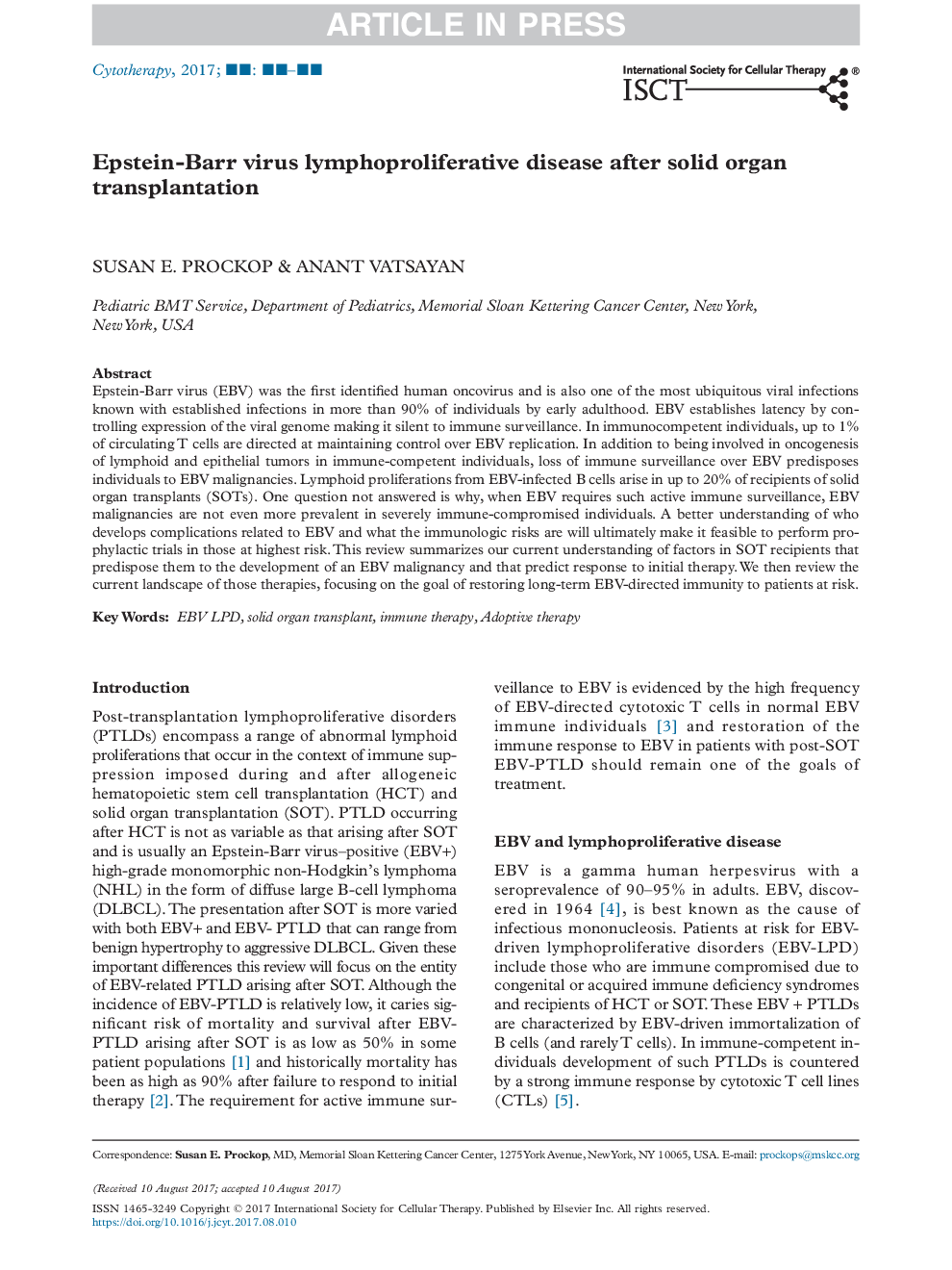| کد مقاله | کد نشریه | سال انتشار | مقاله انگلیسی | نسخه تمام متن |
|---|---|---|---|---|
| 8467077 | 1549524 | 2017 | 14 صفحه PDF | دانلود رایگان |
عنوان انگلیسی مقاله ISI
Epstein-Barr virus lymphoproliferative disease after solid organ transplantation
ترجمه فارسی عنوان
بیماری لنفوپرولیفراتیو پروتئین باری بعد از پیوند عضو
دانلود مقاله + سفارش ترجمه
دانلود مقاله ISI انگلیسی
رایگان برای ایرانیان
کلمات کلیدی
موضوعات مرتبط
علوم زیستی و بیوفناوری
بیوشیمی، ژنتیک و زیست شناسی مولکولی
بیولوژی سلول
چکیده انگلیسی
Epstein-Barr virus (EBV) was the first identified human oncovirus and is also one of the most ubiquitous viral infections known with established infections in more than 90% of individuals by early adulthood. EBV establishes latency by controlling expression of the viral genome making it silent to immune surveillance. In immunocompetent individuals, up to 1% of circulating T cells are directed at maintaining control over EBV replication. In addition to being involved in oncogenesis of lymphoid and epithelial tumors in immune-competent individuals, loss of immune surveillance over EBV predisposes individuals to EBV malignancies. Lymphoid proliferations from EBV-infected B cells arise in up to 20% of recipients of solid organ transplants (SOTs). One question not answered is why, when EBV requires such active immune surveillance, EBV malignancies are not even more prevalent in severely immune-compromised individuals. A better understanding of who develops complications related to EBV and what the immunologic risks are will ultimately make it feasible to perform prophylactic trials in those at highest risk. This review summarizes our current understanding of factors in SOT recipients that predispose them to the development of an EBV malignancy and that predict response to initial therapy. We then review the current landscape of those therapies, focusing on the goal of restoring long-term EBV-directed immunity to patients at risk.
ناشر
Database: Elsevier - ScienceDirect (ساینس دایرکت)
Journal: Cytotherapy - Volume 19, Issue 11, November 2017, Pages 1270-1283
Journal: Cytotherapy - Volume 19, Issue 11, November 2017, Pages 1270-1283
نویسندگان
Susan E. Prockop, Anant Vatsayan,
